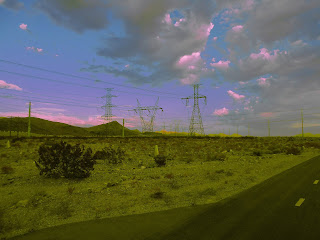 Sept 7, 2021 Pres Joe Biden, “People are beginning to realize this is much, much bigger than anyone was willing to believe. And the whole segment of our population denying this thing called climate change. But I really mean it.” When hundred year storms happen every ten years…When the Colorado river basin is in worst drought in recorded history
Sept 7, 2021 Pres Joe Biden, “People are beginning to realize this is much, much bigger than anyone was willing to believe. And the whole segment of our population denying this thing called climate change. But I really mean it.” When hundred year storms happen every ten years…When the Colorado river basin is in worst drought in recorded history
We need to advance carbon free alternative energies — dams, wind, solar, and nuclear. And don’t leave out geothermal.
We need more energy — not less. Conservation and efficiency are important goals, but we can’t get to where we need to be, unless we invest in more energy.
“Nuclear is the only carbon free energy source that we can use almost anywhere, 24 hours a day, 7 days a week.” Bill Gates, writes in”How to Avoid a Climate Disaster”
If we don’t support nuclear energy with public policy — we are going to gamble our future on unknown future energy sources. This could be fusion, or some great unknown advance. This can happen. Added August 2021: An experiment at the National Ignition Facility (NIF) at Lawrence Livermore released 1.3 MJoules
There is also fusion research with magnets and tokamak toroids which is still in the experimental stage. And there are alternative fission commercial prototypes with thorium fuel.
As Senator, I will support increased funding for Nuclear Fusion research with the aim of building a prototype working nuclear fusion reactor. I will also support increased funding and licensing of commercial conventional nuclear reactors with full safety assessment and stringent enforcement.
It also explains why the Government is shutting down the Keystone pipeline. But why do we support Russian oil to Western Europe?
Let’s examine the nuclear option in more detail. In 2011, a rare tsunami struck the Fukushima nuclear reactor in Japan. It was a total disaster — the plant was a total write-off, and high level radioactive waste destroyed the nearby region. What did the Japanese pollicy makers decide? Japan’s Basic Energy Plan, set in 2018 and due for revision in 2021, targets 22-24% of its energy to come from renewables by 2030, along with 20-22% from nuclear power and 56% from fossil fuels.
Added August 31, 2021 — Hurricane Ida struck Louisiana and the nuclear power plant was O.K. although many transmission lines were knocked down. A million people without electricity — without air conditioning. The Waterford 3 nuclear power plant is vital for the people of New Orleans. And this shows the importance of the grid — it’s not just the generating plant. Alternatives like solar are decentralized and so are better capable of handling these disasters.
It is clear that nuclear energy must play a vital role in our energy needs. However, there are two reasons why nuclear is not yet ready. I have already talked about the risk of a nuclear accident. But the other reason is what to do with the waste — both high and low level waste. High level waste is to go to Yucca Mountain. But that has not been approved, and may never be approved. And who has worked the high level (and low level) waste issue? Who will? There is no public policy at the Federal level for nuclear waste. As Senator I will work with the States and the Nation to get a solution to the nuclear waste problem.
One gram of Uranium is the equivalent of 20 tons of coal. It is estimated that a fusion reactor using 150 gallons of water could power the entire US energy needs.
“What society demands, and appropriately so, is affordable, reliable energy that doesn’t have the emissions associated with today’s energy systems. We’re working on that evolution.” Darren Woods, Chairman Exxon-Mobil
Geothermal can be an option in certain areas. For example, Yellowstone National Park might be a great site for a geothermal power plant. Boise Idaho uses geothermal.
The Republicans, by and large, are climate change deniers. They want us to be blind to the environmental catastrophe which is our future. The Democrats see energy policy as a jobs program — an opportunity to redistribute wealth through tax revenues. As an Independent, I am not constrained by these dangerous policies. I am all for jobs and alternative energies. And I understand the impact of transitioning from conventional fuels for our way of life. But no energy policy is the most dangerous energy policy of all. It is like a ship with no one at the helm.
This year the Indian point nuclear reactor on the Hudson river was decommissioned after fifty years of pollution free operation. Indian point powered all of the electricity needs for New York City. There are only fossil fuel plants to replace it. We are going in the wrong direction. The hydro power and wind are not filling the gap.
We don’t have the luxury of getting this wrong. We will know within the decade whether these hundred year storms and these worst ever droughts are flukes. And nuclear is one of the fastest ways of getting us to a carbon-free power grid. It is not time to panic. But we need common sense policy. And that is another reason why I need to be in the U.S. Senate.
In my first hundred days as Senator, I will work with the Nuclear Regulatory Commission (NRC) rules for current plants. The current baseline is a sixty (60) year lifetime before retirement. Why can’t we extend these licenses to eighty (80) years? The impetus is the looming threat of global warming / climate change from CO2 emissions. Of course, we need a focused task force of engineers to look over the problems associated with aging reactors. A 2017 NRC report is a good start. Subsequent license renewal (SLR) is an opportunity to help solve the problem in a cost efficient way, that combines regulatory authority with ethical engineering.

